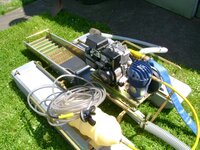goldndogs
Newbie
I'm planning on buying my first dredge, and I'm not sure whether I should buy a 2" or 2.5" dredge (at this time I don't want anything larger). I'm not too concerned with the weight difference between the two. I'd prefer to buy a 2 1/2" dredge, but if I bought a new dredge the 2 1/2" is about $500 more expensive than the 2". And if I look for used dredges, it all depends on what sizes are available out there. My question - is there really a large difference in the amount of material you can process between the two sizes, seeing that they're so close in size?
Upvote
0




 Who said we'd never use it when we "grew up"?
Who said we'd never use it when we "grew up"?



